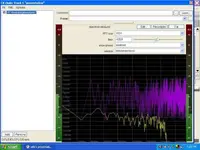Rokket
Trailing Behind Again
I goofed. I was video taping the wife for some project she has going on. She has to do a 10 minute presentation on video. The mic on the cam wasn't cutting it, so I tried a shotgun mic I have, only to hear the hum of a ground in the damn soundtrack. We tried it again with a different mic setup, but I fear the problem is in the jack on the camera, and not in my mics or cables. She refuses to redo the presentation, so I am stuck trying to edit out the offending noise.
I was thinking notching it out with a parametric eq. How would you do it?
I was thinking notching it out with a parametric eq. How would you do it?



 .
.